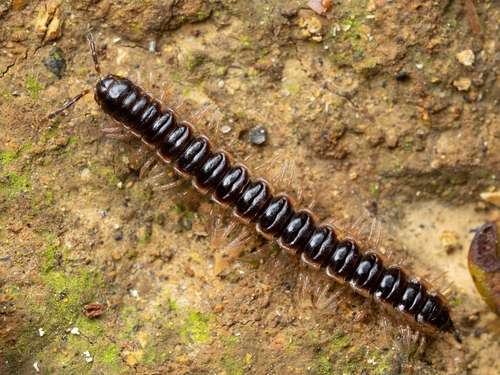
The hothouse millipede (Oxidus gracilis), commonly referred to as the short-flange millipede or garden millipede, is a species of millipede in the Paradoxosomatidae family that has been widely spread around the world and is occasionally a problem in greenhouses.
Description
- As adults, greenhouse millipedes grow to be 18 to 23 mm (0.71 to 0.91 in) long and 2 to 2.5 mm wide (0.079 to 0.098 in).
- Each segment has a transverse groove in the dorsal part, which is a characteristic of most paradoxosomatids.
- Their tint is brown, and their paranota are a light cream color (lateral “keels” extending from each segment).
Habitat
Thought to be native to Japan, greenhouse millipedes have been imported throughout the world. In addition to temperate North and South America, the region north of Iran, and all of Europe, they can be found there.
Feeding
Detritivores, millipedes eat other material such as leaf litter, millipedes graze on it. They love damp environments like flower beds and leaf piles, and they remove calcium carbonate off rocks and pavements.

Reproduction
Until they reach adulthood, millipedes continue to grow, gaining a new segment with each moult. In adult males, modified legs known as gonopods serve as reproductive organs, leaving that diplosegment with just one set of legs and an additional pair of gonopods. Adults are capable of many matings. Females lay their eggs in wet soil after mating. The millipede egg and juvenile phases are poorly understood. The millipede will defend itself during molting by enclosing itself in a ball of mud until it is ready to emerge.
Poisonous
The greenhouse millipede emits foul-smelling toxins when threatened, like many other millipedes do. Few predators will eat them as a result. Although harmless to humans, greenhouse millipedes are poisonous to predators.
Table





